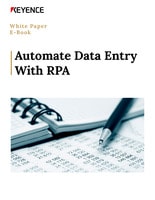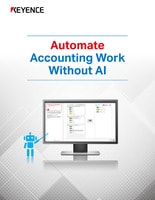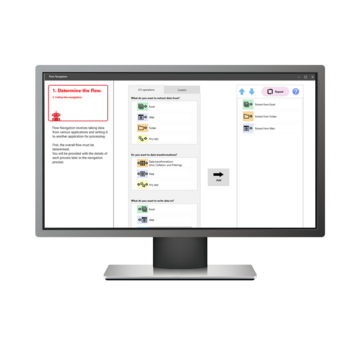RPA (Robotic Process Automation)
Retail Industry Automation with RPA

The retail industry is constantly evolving with the demands of consumers changing rapidly. Retailers need to respond quickly to customer needs, optimize their supply chains, and maintain an efficient back-end operation to stay competitive. Robotic Process Automation (RPA) is helping retailers tackle operational challenges by automating repetitive, rule-based tasks that can be prone to human error, ultimately improving both efficiency and the customer experience.
From inventory management and order fulfillment to customer service and data processing, RPA offers transformative benefits to retailers by reducing operational costs, increasing process speed, and enhancing accuracy. By automating time-consuming manual tasks, RPA frees up human employees to focus on higher-value work, such as engaging with customers and improving business strategy.
Discover more about this product.
Click here to book your demo.

Common Challenges in Retail
Manual Order Processing
Order processing in retail can often involve many steps, such as verifying customer details, updating inventory, and generating invoices. Manual intervention at any stage can cause delays and errors, leading to customer dissatisfaction. RPA can automate the entire order processing cycle, from order receipt to invoicing and shipment, ensuring faster processing and fewer errors.
Inventory Management Complexities
Inventory management is crucial to ensuring that retailers meet customer demand without overstocking. RPA helps retailers maintain real-time updates on stock levels, automatically reorder items, and track stock movements. By automating this process, RPA ensures that inventory levels are optimized, reducing the chances of stockouts or overstocking, which can lead to lost revenue.
Customer Service Inefficiencies
Customer service operations often require agents to manage repetitive inquiries, such as checking order statuses, updating shipping details, or processing returns. These tasks can be automated with RPA, allowing customer service agents to focus on more complex issues and provide a better experience for customers.
Benefits of RPA for the Retail Industry
- Improved Order Fulfillment: Automating the order processing workflow speeds up order fulfillment, reduces delays, and improves customer satisfaction.
- Better Inventory Control: Real-time inventory management and automated stock level updates ensure optimal stock levels, minimizing the risk of stockouts or overstocking.
- Cost Savings: By automating manual tasks, RPA reduces the need for labor-intensive work, leading to significant cost savings for retailers.
- Enhanced Customer Experience: Automating routine customer service tasks allows agents to focus on high-value interactions, improving overall service quality.
- Scalability: RPA can scale with your retail operation, automating tasks during peak periods such as holiday sales or product launches without the need to hire additional staff.
How RPA Works in Retail Operations
RPA can be implemented in various parts of the retail operation to automate key business processes and support broader operations department initiatives focused on efficiency and scalability:
- Order Processing Automation: RPA can automate the entire order cycle, from receiving orders, validating customer information, updating inventory systems, and generating invoices. It can also handle returns and order cancellations, ensuring smooth operations.
- Inventory Management Automation: RPA bots can track stock levels, generate restocking alerts, and automatically place purchase orders with suppliers when inventory reaches a certain threshold.
- Customer Service Automation: Automate customer inquiries, order status updates, returns processing, and other common customer service tasks. RPA can be integrated with chatbots to provide quick responses and improve customer support efficiency.
- Data Entry and Reporting Automation: Retailers handle large volumes of data, from sales reports to customer preferences. RPA can automate the extraction and analysis of data from various systems, providing actionable insights for decision-making.
Integrating RPA with Retail Systems
RPA integrates seamlessly with a variety of retail systems, including:
- Point of Sale (POS) Systems
- Enterprise Resource Planning (ERP) Systems
- Customer Relationship Management (CRM) Systems
- Inventory Management Systems (IMS)
- Order Management Systems (OMS)
These integrations allow RPA to work seamlessly with existing software platforms, improving workflows and reducing manual data entry errors.
Designed for Business Users
Unlike traditional automation tools that require scripting or IT involvement, our platform is no-code and intuitive. Users can build and manage their own automations using drag-and-drop logic and built-in recording features. Whether you’re automating simple tasks or complex workflows, you can do it without advanced technical training.
Who Benefits the Most?
- Inventory Managers: Automate inventory updates, stock level tracking, and purchase orders to maintain optimal stock levels.
- Order Fulfillment Teams: Speed up order processing and shipping by automating routine tasks, leading to faster turnaround times and better customer satisfaction.
- Customer Service Teams: Enhance the customer service experience by automating repetitive inquiries and allowing agents to focus on complex cases.
- Sales and Marketing Teams: Use automated data extraction and reporting to gain insights into customer behavior, sales trends, and market opportunities.
By integrating RPA into retail operations, businesses can achieve a higher level of efficiency, improve inventory control, and deliver a better customer experience. RPA enables retailers to stay competitive by improving operational agility and reducing costs.
FAQs
How Does RPA Improve Order Processing in Retail?
RPA automates the entire order-to-cash process, from receiving orders to updating inventory and generating invoices. This leads to faster order processing, fewer errors, and improved customer satisfaction.
What Benefits Does RPA Offer for Inventory Management?
RPA helps with real-time inventory updates, automatic reordering of stock, and the generation of purchase orders when inventory reaches a certain threshold. This ensures retailers maintain optimal stock levels and reduce the risk of stockouts or overstocking.
Can RPA Be Integrated With Retail Systems?
Yes, RPA integrates seamlessly with various retail systems, such as POS, ERP, CRM, and IMS. This allows retailers to improve process efficiency by automating tasks without disrupting existing systems.
We’re here to provide you with more details.
Reach out today!

Related Downloads
Related Products
Scroll




